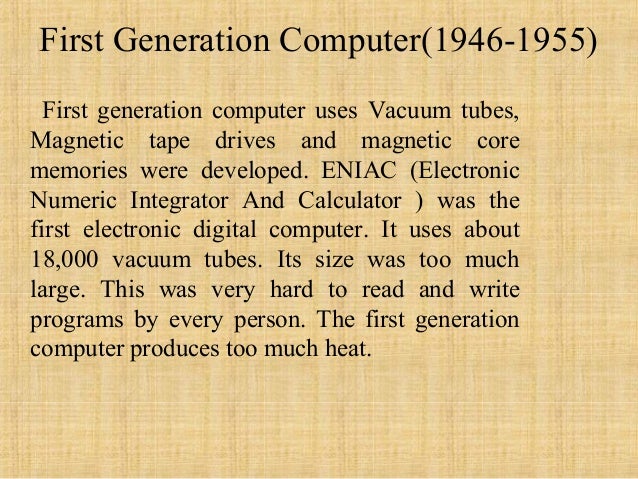- Computer Fundamentals
Generation in computer terminology is a change in technology a computer is/was being used. Initially, the generation term was used to distinguish between varying hardware technologies. Nowadays, generation includes both hardware and software, which together make up an entire computer system. The Third generation computers used the integrated circuits (ICs). The fourth generation computers started with the invention of Microprocessor. The Microprocessor contains thousands of ICs. The 5th Generation is based on the technique of Artificial Intelligence (AI). Computers can understand spoken words & imitate human reasoning.
5th Generation Computers Facts
- Computer Useful Resources
- Selected Reading
Difference Between 4th And 5th Generation Computer Details

Difference Between 4th And 5th Generation Computers
Generation in computer terminology is a change in technology a computer is/was being used. Initially, the generation term was used to distinguish between varying hardware technologies. Nowadays, generation includes both hardware and software, which together make up an entire computer system.
There are five computer generations known till date. Each generation has been discussed in detail along with their time period and characteristics. In the following table, approximate dates against each generation has been mentioned, which are normally accepted.
Fourth generation programming languages are designed for a specific application domain, while fifth generation programming languages are deigned to allow computers to solve problems by themselves. 4GL programmers need to specify the algorithm in order to solve a problem, whereas 5GL programmers only need to define the problem and constraints. Third Generation The period of third generation: 1965-1971. Integrated Circuit based. The third generation computers emerged with the development of IC (Integrated Circuits). The invention of the IC was the greatest achievement done in the period of third generation of computers. IC was invented by Robert Noyce and Jack Kilby in 1958-59. IC is a single component containing a number of transistors. Compare the distinctions between first, second, third, fourth and fifth generation of computers. The first generation computers were developed during 1943-1958. It used vacuum tubes as the active electronic components and was therefore very large.
Following are the main five generations of computers.
| S.No | Generation & Description |
|---|---|
| 1 | First Generation The period of first generation: 1946-1959. Vacuum tube based. |
| 2 | Second Generation The period of second generation: 1959-1965. Transistor based. |
| 3 | Third Generation The period of third generation: 1965-1971. Integrated Circuit based. |
| 4 | Fourth Generation The period of fourth generation: 1971-1980. VLSI microprocessor based. |
| 5 | Fifth Generation The period of fifth generation: 1980-onwards. ULSI microprocessor based. |
